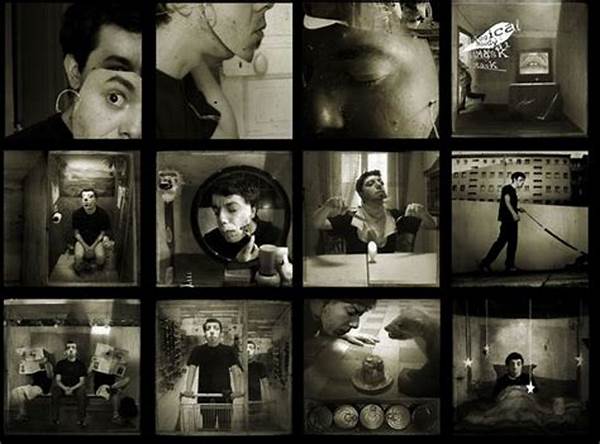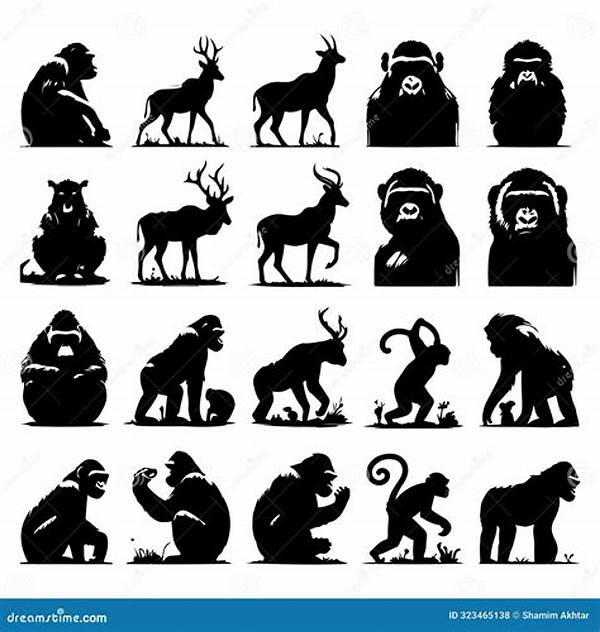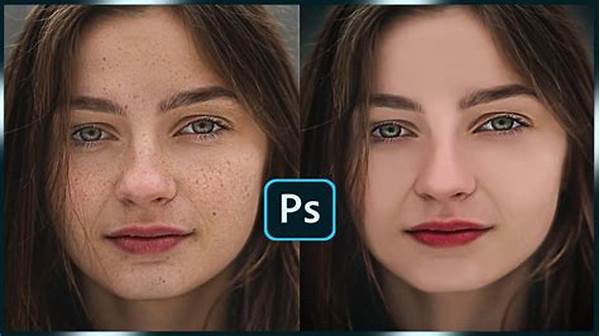Hey there, fellow photography enthusiast! You know how everyone says a picture is worth a thousand words? Well, that couldn’t be more true when it comes to visual narrative techniques in photography. This artistic skill isn’t just about snapping a pic and hoping for the best; it’s about telling a story, invoking emotion, and capturing the essence of a moment through your lens. Whether you’re capturing portraits, landscapes, or street scenes, developing your narrative skills can add depth and dynamism to your work. Curious about how to start weaving stories into your photos? Let’s dive into this fascinating world together!
Read Now : Enhancing Focus In Portrait Photography
Capturing Emotions: The Heart of Storytelling
At its core, visual narrative techniques in photography revolve around the art of evoking emotions. Consider this: A photograph of a child playing in the rain can be more than just a cute moment. By capturing their joy, the shimmering droplets, and the play of light, you transform a mundane scene into an engaging story. The beauty of photography lies in its power to stop time and provoke feelings that resonate well beyond the confines of a frame. When composing your shots, think about the emotions you want to convey. Use lighting, composition, and subjects intentionally to create a compelling narrative. The best stories are those that aren’t obvious at first. They invite viewers to linger, explore, and share in the emotions immortalized within the shot.
Another aspect of visual narrative techniques in photography is sequencing. Have you ever experienced a photo series that gently unfolds a tale before your eyes? By sequencing images, you can lead your audience through a visual storyline, much like pages in a book. Each photo should contribute to the overarching story while maintaining its unique identity. For instance, try capturing a day in a bustling city: the morning rush, the quiet afternoon parks, and the vibrant nightlife. Each image offers a piece of a captivating narrative puzzle.
Lighting also plays an integral role in visual storytelling. Different times of the day or sources of light can significantly impact the mood of your photos. The warm glow of sunset can evoke a sense of peace or nostalgia, while stark artificial lighting might suggest a more contemporary or surreal vibe. By experimenting with lighting, you can add layers to your visual narrative and create rich, multidimensional images that resonate with your audience. Remember, storytelling through photography is a journey—a creative exploration of moments big and small, waiting to be captured.
The Power of Composition
1. Composition can make or break your visual narrative techniques in photography. A well-composed photo directs viewers’ eyes and guides their emotional responses.
2. Using the rule of thirds can enhance storytelling by balancing elements in your frame. It adds harmony and directs attention to focal points.
3. Symmetry and patterns are powerful in visual narrative techniques in photography. They create aesthetically pleasing images and convey a sense of order.
4. Leading lines draw viewers into the scene, enhancing the story by guiding the eye to the main subject or through the narrative flow of the photograph.
5. Depth of field adds layers to your story. A shallow depth isolates the subject and evokes intimacy, while a larger depth includes more details for context.
Lighting: Setting the Mood
The importance of lighting in visual narrative techniques in photography can’t be overstated. Lighting isn’t just a technical element; it’s a mood-setter, a scene’s emotional undertone. Think about a dimly lit room, the shadows playing across a subject’s face. Doesn’t it evoke a sense of mystery or introspection? The same scene in bright sunlight might instead tell a story of positivity or action. By understanding and manipulating light, photographers can craft compelling visual narratives.
One technique involves using natural lighting, which changes with the time of day and weather conditions. Early morning or golden hour can imbue your photos with softness and warmth, perfect for peaceful or romantic stories. On the other hand, flash and artificial lighting can introduce drama or focus, giving you the flexibility to mold the narrative according to your vision. They say photography is painting with light, and truly, it’s both an art and a clever craft. Through strategic use of lighting, photographers tell deeper stories, capturing not just subjects, but the emotions that breathe life into the images.
Narrative Depth Through Perspectives
1. Different perspectives significantly impact visual narrative techniques in photography. High angles might make subjects appear vulnerable, while low angles can evoke power.
2. Eye-level shots offer relatability and connection between subjects and viewers, establishing a direct narrative link.
3. Experimenting with unique angles can add interest and alter perceived storylines by introducing new contexts, revealing unseen details.
4. Incorporating reflections, like in water or glass, adds layers to the story, symbolizing duality or different realities.
Read Now : Energetic Animal Behavior Photography Tips
5. Aerial photography provides a bird’s-eye view, contributing to expansive storytelling, presenting subjects as part of a larger, interconnected world.
6. Close-up shots offer intimate looks at details, conveying emotions and stories in subtler, more nuanced ways.
7. Wide-angle shots capture the environment, setting the scene, and giving viewers an immersive backdrop for narratives.
8. Playing with perspectives invites viewers to engage more actively, considering alternate versions or extensions of the portrayed story.
9. Tilting the camera can skew reality, disorienting viewers intentionally and enhancing the drama or tension within the story.
10. Using depth, like shooting through layers or frames, creates a dimensional narrative encouraging exploration beyond the immediate focus.
Using Props to Enhance Storytelling
Props can be the secret ingredient in visual narrative techniques in photography. Imagine a simple photograph of a desk. Now, add a steaming coffee mug, an open journal, and a photo frame, and suddenly there’s a story about a writer or perhaps a student prepping for exams. Props anchor context and introduce elements that push a narrative forward. They create a scene that feels alive, giving authenticity to the story being told. When selecting props, think about what’s relevant to the narrative. They should complement the story, not overshadow it.
When done right, props seamlessly integrate into the composition, providing hints about the plot or what led up to the captured moment. For instance, a baseball cap perched on a chair in the setting sun might tell of leisurely summer afternoons spent outdoors. Just be mindful; too many props or irrelevant ones can clutter the scene and dilute the message. Always aim for balance. By thoughtfully incorporating props, photographers can add layers to their visual narratives, offering viewers a richer tapestry to interpret.
The Role of Color in Narrative
Alright, let’s chat about color, because it’s a game changer in visual narrative techniques in photography. Ever notice how certain colors just vibe with an emotion or a situation? Like, blue might scream calm and peace, while red’s all about passion or danger. By playing around with color, you’re basically whispering little secrets and cues to your audience. Seriously, a splash of color can change the whole mood of a shot and take your storytelling to a whole new level.
Colors can be symbolic. Warm tones like oranges and yellows might evoke coziness or nostalgia, while cooler shades give off a sense of detachment or serenity. You’ll be surprised at how tweaking just a hue or saturation can twist the narrative in unexpected ways. Aim for consistency to bolster your story; a mixed palette can muddle the message. Understanding color theory helps in crafting visual stories that are not only striking but also emotionally resonant, making sure your photography speaks volumes.
Final Reflections on Visual Storytelling
As we wrap up our deep dive into visual narrative techniques in photography, it’s clear that this craft is about so much more than just aiming your camera and clicking. It’s about constructing a narrative that speaks not only through images but also to the hearts and minds of viewers. Whether through composition, lighting, angles, or the subtle use of color and props, all these elements combined allow photographers to bring their vision to life.
What’s most exciting about visual storytelling is that there’s always room for personal interpretation. Two photographers can capture the same scene and tell entirely different stories. It’s a creative playground where instincts blend with technical skills to communicate visually. So, as you explore this captivating field, remember that the best stories aren’t always the loudest or the busiest images. Sometimes the simplest photographs, crafted with intention and heart, leave the most lasting impressions. Keep experimenting with these techniques in your own photography journey, and watch as your visual narratives come alive, inviting viewers into the worlds you’ve created.



